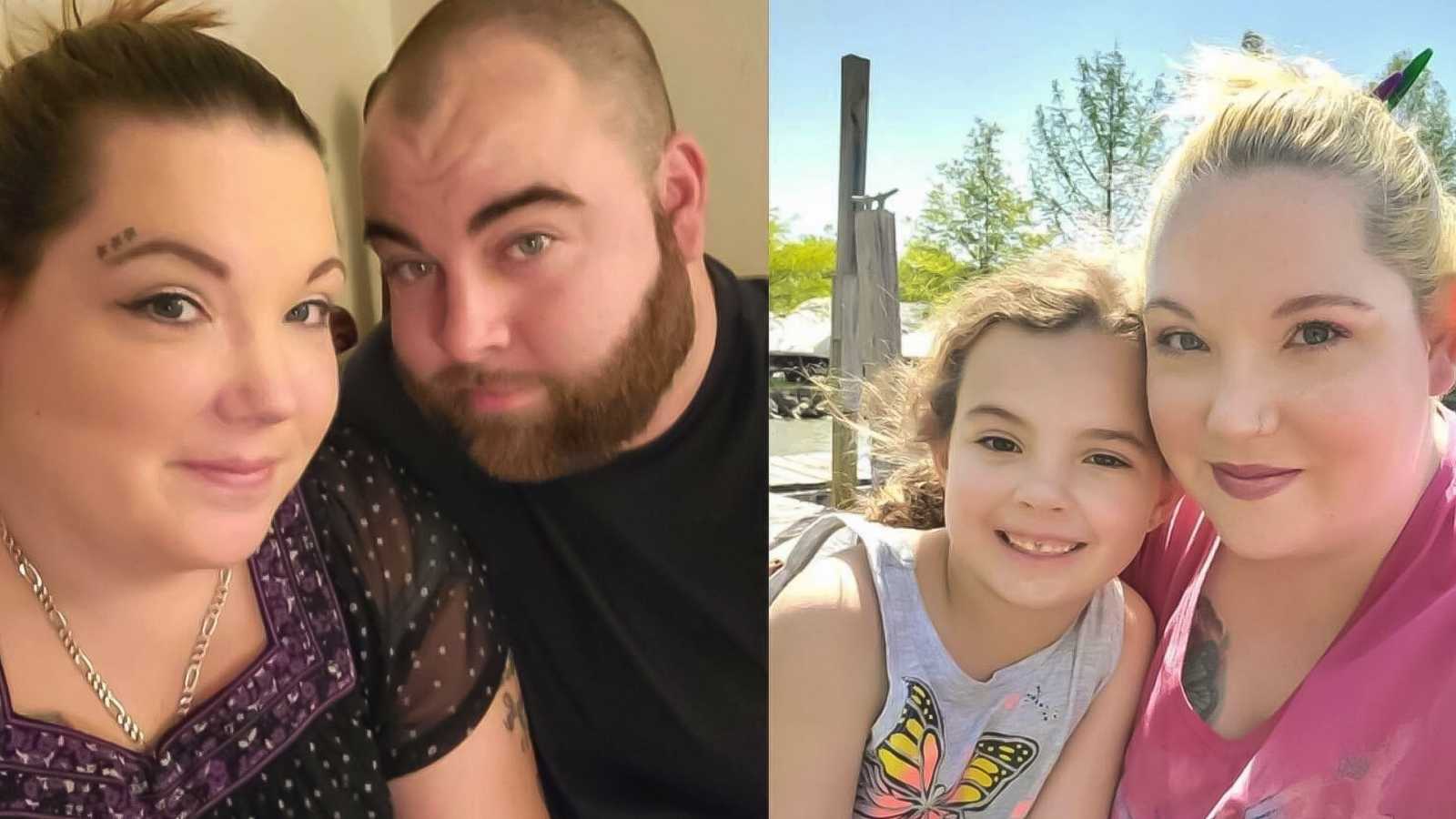“Some would say I was lucky. I was 15 the first time I heard the word ‘endometriosis.’ I had no idea what that meant for me or for my future, or exactly how unlucky I would be.
I was a sophomore in high school when my mom took me to the pediatrician because I was missing time from school and complaining of pain and severe nausea surrounding my period. My pediatrician immediately said, ‘That sounds like endometriosis,’ and referred me to a gynecologist. I went to the gynecologist and he stated my symptoms were likely endometriosis and decided to put me on a birth control pill to help with my pain. After two years of continued pain, I had my first laparoscopic surgery, which included excision and a laparoscopic uterosacral nerve ablation (LUNA). My post-operative diagnoses were stage two pelvic endometriosis, pelvic pain, and Allan-Master syndrome. I have had trouble with my memory for as long as I can remember, but I remember so vividly the surgeon coming in at my follow up and telling me I was stage two. I didn’t know exactly what that meant, but the next sentence out of his mouth would haunt me for years to come. ‘We usually tell women at this stage to complete their families.’ I was only 17 at the time and a senior in high school. That was not even remotely an option for me.
After just 3 months, my pain returned. When I saw my doctor 6 months post-op, it was the first time Lupron was mentioned to me. A year later, I couldn’t take the pain anymore and decided to move forward with the Lupron treatment. I received 6 shots, one every month for 6 months. At the start, I was 18 and weighed about 120 pounds. At the end of the 6 months, I was 19 and weighed 200 pounds. I was still in pain on a regular basis and was suffering from hot flashes as a side effect.
Three months after my last Lupron injection, I had my second laparoscopy to excise endometriosis, with a presacral neurectomy. My post-op diagnosis confirmed recurrent pelvic endometriosis.
Eight months later, my pain was recurring. I was advised to start taking my birth control pill continuously to avoid having a period.
Shortly after that, I was referred to a pain specialist, who was, by far, the most unprofessional, pretentious, and asinine provider I ever met with. He confirmed my diagnosis of chronic pelvic pain, endometriosis (based on my surgeon’s records), and pelvic floor tension myalgia. He also diagnosed me as having ‘pelvic pain posture,’ which from being bent over or curled up in pain, meant my pelvis actually has a forward tilt to it. He started me on Cymbalta. I stayed on that for a few weeks, but it gave me insomnia and did not help with my pain, so I discontinued it. The pain doctor then did a pelvic venogram to rule out pelvic congestion. My score was a 4/9, just shy of the 5/9 recommended for a confirmed diagnosis of PCS. After the venogram, he recommended I try pelvic floor physical therapy. It was SO awkward and didn’t help. The physical therapist even said my muscle strength and tone were good and he wasn’t sure why I was there. After that, he basically told me if nothing was working, the pain must be in my head or not related to endometriosis. He recommended a psychiatrist for therapy and a gastroenterologist for a colonoscopy.
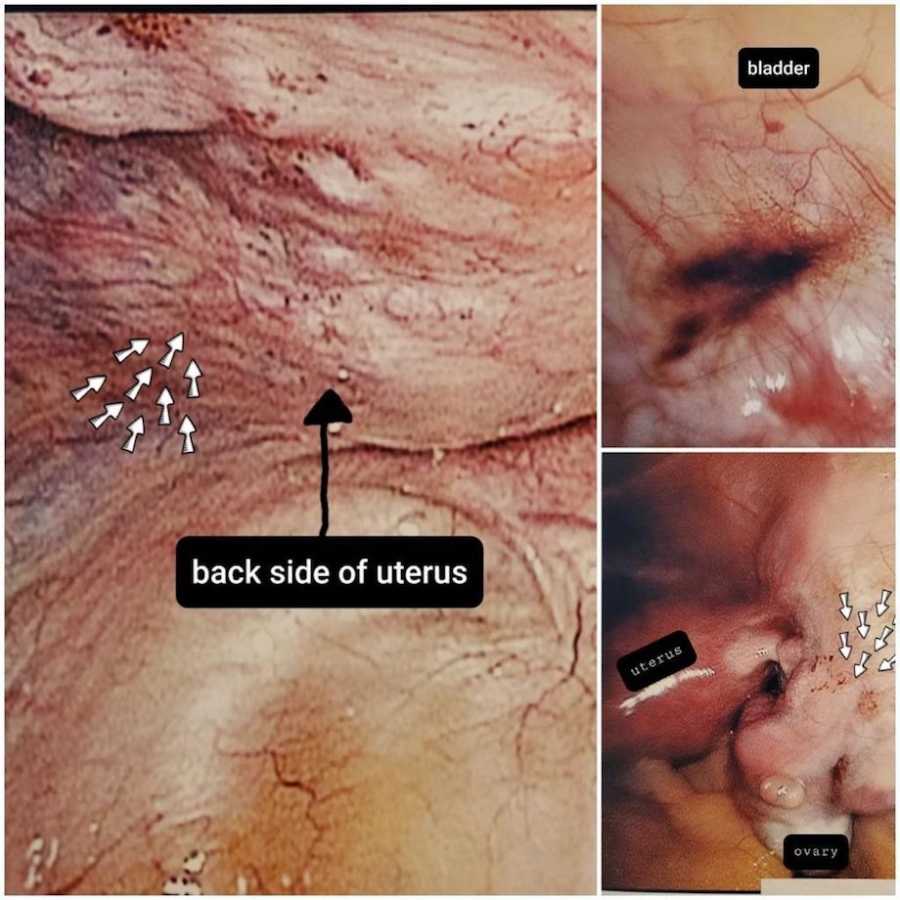
It was a month before my wedding and I decided just to let it go. Maybe it was all in my head and if I just went on with my life, it would go away eventually.
About a year later, I returned to my gynecologist because I was having a great deal of pain. Mostly when using the bathroom and during sex. I was still taking my birth control continuously, so I hadn’t had a period in almost 2 years. He recommended I try Letrozole. I took it for about a month and a half before I had to stop due to nausea. What I didn’t know at the time is it was another chemotherapy drug being used to treat Endometriosis off label. At just 21, I had already put two different chemotherapy drugs into my body at two different times without ever being diagnosed with cancer.
When that didn’t work, I reached out to my primary care for a referral to a gastrointestinal doctor. I had a colonoscopy and upper endoscopy at the same time. Basically, they knocked me out and stuck cameras in both ends! They found nothing. I returned to my gynecologist and he sent me to an interventional pain specialist.
These doctors are different because instead of just managing your pain with pills, they try all kinds of other things. Obviously, with chronic pelvic pain, options are still limited, but it was something I had never heard of before. Second, to my gynecologist, this doctor was my favorite. He was the first provider outside of my gynecologist who really validated my pain! For women with endometriosis, this is huge. We spend so much time being told we’re exaggerating, being dramatic, or it is all in our heads. It is beyond words to have a provider, a male provider at that, acknowledge something is definitely wrong. This doctor recommended a procedure called a superior hypogastric plexus injection. Basically, it involves taking a LONG needle and inserting it through your lower back into the bundle of nerves at the front of the pelvis. Oh, and did I mention they keep you awake while they do it? Multiple times, as the doctor inserted the needle he asked me how I felt. I always responded I was fine. He told my mother, ‘She just had a 12-inch needle in her back and told me it didn’t hurt. If she is saying her stomach hurts, it must really hurt.’ Neither injection helped with my pain.
I returned to my gynecologist. He referred me to a regular pain management office for a consultation. I waited an ungodly amount of time in the waiting room, had to pee in a cup for a drug test, and then was finally in an exam room. The provider came in and asked about my history. Then, she pulled out her prescription pad and said, ‘Okay, so what would you like?’ I was taken aback and replied, ‘Excuse me?’ She again asked me what I wanted. When I told her I didn’t want to take narcotics because I still have to drive and work every day. She flat out said, ‘Well, then I’m not sure why you’re here,’ and left the room. The medical assistant came in and told me my appointment was over.
At this point, I was 22 and had been married for a year and a half. My (now ex-) husband and I decided we were going to try to get pregnant. Knowing what I had been told 5 years earlier, we discussed it with my doctor and decided the best option to help us conceive would be to have another excision surgery to ‘clean everything out’ and then start trying. I had excision surgery number three with confirmed recurrent endometriosis and pelvic adhesions. Just 9 months later, I had excision number four and another 9 months after that, excision number five, both with confirmed recurrent endometriosis. It was surgery number five, where I first remember being told my disease had advanced to stage 4. During this time, not once did I ever get so much as a hint of a positive pregnancy test.
It had now been a year and a half of trying to get pregnant without success. We decided to have a consultation with a fertility specialist. I had lab work done that was all normal and he had his sperm checked. Everything was fine. I tried taking Clomid for a month without success.
Tired of the struggle and fighting with pain, I met with my gynecologist to discuss a hysterectomy. He told me after the procedure, my odds of being pain-free would be about 80%. I was in. Sign me up. At 24, I was convinced I would never be a mother and just wanted to stop being in pain all the time. My ex-husband wasn’t ready to give up and a few weeks later, I canceled the procedure.
We went back to the fertility doctor. Knowing my history, the fertility specialist suggested a hysterosalpingogram (HSG) to check my fallopian tubes. I started working on trying to get it approved because fertility treatments are not usually very openly covered by insurance plans.
Unfortunately, over the next year or so, my marriage could not withstand the hardship of our struggle with infertility. It didn’t help we met as high school kids, right around the time I was first diagnosed. We were just kids who faced an awful battle, and we just grew apart.
Heartbroken and over it all, I quickly moved on to the first guy I met after my husband left me. A month into this new relationship, I went to my gynecologist and scheduled another laparoscopy and asked to be put back on birth control, just in case. I filled the prescription and decided for sh*ts and giggles I would take a pregnancy test before I started taking the birth control. Call it mother’s intuition if you want, but I’ll be damned if that little plus sign didn’t show up faster than I could have ever imagined. It was June 12, 2012, and after 3 ½ years of battling infertility, I got my first big fat positive. It was the most terrifying day of my life. Let me paint the picture for you:
I was about to turn 25, recently separated, had just moved in with my aunt because of the separation, I had only been dating this guy for a month, and had told him I couldn’t get pregnant. Now, here I was, in my aunt’s bathroom, staring at this stick like it had just back-handed my momma. I got over the fear, told my boyfriend, and told my mother. I grew more and more excited as I realized exactly how special this event was.
I scheduled my first OB appointment since my regular gynecologist/surgeon is not an OB. They make you wait until the 12-week mark, which was just agony. By the time the date came, we were beyond excited. We anxiously checked in to the office and waited for our turn to be called. We went back into the room and I got changed and we waited, smiling ear to ear, for the moment we could first hear our baby’s heartbeat! What we got instead, was the most callous, dispassionate statement from the doctor. To say her bedside manner needed improvement would be a drastic understatement. ‘I don’t see a baby,’ she said as nonchalantly as humanly possible. To her, it was just another Tuesday. To me, those words shattered my whole world. My baby, my little miracle, my dream of being a mother, was gone. I don’t remember anything else from that day, but in the next few days, I had lab work to confirm my hormone levels were dropping and I would inevitably lose the pregnancy. I decided not to wait and to have a D&C performed along with the previously scheduled laparoscopy by my original surgeon. That was excision number six.
Seven months later, I lost a second pregnancy just 4 days after I took a positive test. This one happened naturally because it was so early and happened so quickly. It was the most pain I’d ever felt at the time. Ironically, a friend who had gotten pregnant around the same time as I had the first time delivered her baby the very next day. We went to the hospital to visit and I spent a lot of time in the bathroom, crying hysterically and losing another baby at the same time I should have been delivering my first. It was awful.
Just two months later, I got pregnant a third time. I was very cautious and hesitant to get excited. We shared the news with our immediate family, but I was very skeptical and refused to buy anything or make any solid plans until I was into the third trimester. I developed Pubis Symphysis Dysfunction, which was a total blast. Again, very painful.
I was due on December 29, 2013. I went into labor on Christmas night at 8 p.m. I had contractions every five minutes all night long. In the morning, we went to labor and delivery at the hospital. They checked my cervix and I was still only 1 ½cm dilated, so they sent me home. I continued with contractions every five minutes for the next 24 hours. I had a doctor’s appointment the following morning already to check my blood pressure. At my appointment, my blood pressure was slightly elevated and I was now dilated to 4 cm. I was admitted and got the epidural as soon as it was offered! After already being in labor for 2 days, I was done. I labored for a few more hours and around 2 p.m., my water broke on its own. After another 6 hours of contractions, the doctor came in and said I was 9 ½cm dilated and I could start pushing.
After pushing for three hours, saying some choice words to the doctor and the baby’s father sitting across the room bored on his phone, the doctor told me they don’t like first-time moms to push for more than three hours and she was now recommending a C-section. It was 11 p.m. The baby was now stuck in my pelvis, while we waited for an operating room to open. We waited for over 2 hours. While we waited, my epidural ran out and I started to be able to feel everything again. I screamed bloody murder until they gave me a partial spinal for the C-section a little early.
Finally, it was time to head to the OR. Once everything was situated, they pushed the baby back inside and pulled her out of the incision in my belly. It was 1:59 a.m. on December 28, 2013. She was literally holding on to my uterus. They got her cleaned up and took her away. When they started sewing me up, I heard the doctor tell an assistant to go page another doctor, but they weren’t telling me anything. Apparently, when she had cut my uterus for the C-section, it had torn all the way down on both sides to the uterine ligaments. It took two surgeons 3 hours to stitch me back together. On top of that, I needed a few stitches downstairs too! I finally held my daughter at 5 a.m. She was 3 hours old and I hadn’t slept in about 4 days!
After that, recovery was okay. I was used to recovering from abdominal surgery. Since I had been in so much pregnancy-related pain, I held out hope I would get some relief from my endometriosis pain for a bit. I was wrong. It came back quickly and with a vengeance.
I returned to my regular gynecologist and he advised it was still his belief that my best option for being pain-free, given everything else I had already tried, would be a hysterectomy. I went home and talked it over with my boyfriend and he agreed. I got my miracle and I needed to do what was best for me. Just five months after my daughter was born, I had a full hysterectomy. The doctor and I decided to leave my ovaries because I was so young, only 26, but he agreed if they became problematic, he would remove them later.
I was pain-free for almost a year. Then for another two years, I had no choice but to suffer and try to deal with the pain. Since there were no other options except surgery, I tried to hold off. Then I lost my job and had no insurance for about a year.
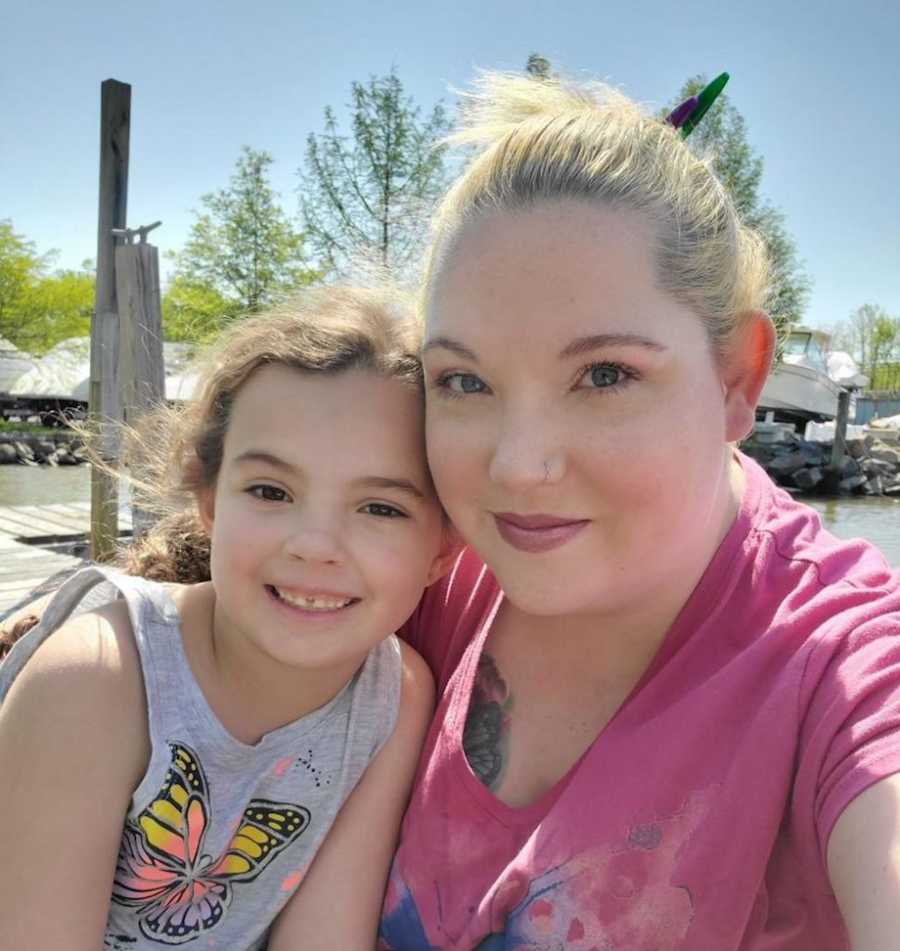
I had excision number seven on May 27, 2016, with an appendectomy and excision number eight on December 8, 2017, with bilateral oophorectomy. After the procedure to remove my ovaries, my doctor put me on HRT patches. I had a bad reaction to the adhesive on the patches, so he said he would switch me to the pill form. After doing my own research, I decided to refuse the HRT. There was no point in replacing the hormones that could have had an effect on recurring endometriosis. After a few months, and almost like clockwork, my pain returned. I went back to the gynecologist and he suggested I take Letrozole. At this point, I didn’t remember having taken it all those years before, but I had learned to do my own research before agreeing to anything. I found there had been successful studies of Letrozole being used to reduce endometriosis lesions. Since my uterus and ovaries were gone, the doctor explained taking the Letrozole would drain every last ounce of estrogen from my body, essentially starving any endometriosis lesions. I took that for a month and it did not help.
My last excision surgery, number 9, was on February 22, 2019.
Since then, my pain has returned. It only took a few months after surgery. I went back to my gynecologist and he told me my only options now are narcotics or medical marijuana. Working my full-time job won’t allow either of those. And I can’t afford to stop working. So for now, I just deal with it. I try to listen to my body and don’t push myself too much. I was able to get a disability placard for my vehicle, so I can park close when I have to go out. This is helpful, especially when doing things where I know I’m going to be on my feet for a while, like grocery shopping.
A few years ago during a move, I found my old school transcripts from elementary through high school. In the box were the notes from all the times I had gone to the nurse’s office during those years. Guess what I found? I started going to the nurse, at least once a month, right around the same time I started my period at 13. I pray every single day my daughter will never, ever know this pain. I don’t ever want her to go through even half the things I have been through. I don’t know if I could be on the other side of it. I don’t know how my mom did it all these years. Are there things I wish I could change? Absolutely! Are there treatments I wish I hadn’t tried, for sure! Do I wish I had learned a little earlier on to be my own advocate instead of just following the direction of the doctors just because they have fancy diplomas and letters behind their names? Hell yeah.
I am almost 33, which means I have been fighting endometriosis for 20 years. During that time, I’ve had nine excisions, a C-section, and a full hysterectomy with bilateral oophorectomy. I have tried every treatment known to man. I have been in pain more days than I have not. I have battled depression and contemplated whether it would be worth it to just end it all. I have had one failed marriage and another failed engagement with my daughter’s father. I have dealt with severe regret and resentment because I made a permanent decision with what turned out to be a temporary partner.
But you know what else I’ve done? I have persevered. I have refused narcotics and opioids to treat my pain. I have fought the demons. I have found a man who loves me and my daughter dearly and I married him! We have raised our now 6 ½-year-old, who is smart, funny, compassionate, and beautiful. I started going to community college after she was born and I completed my AAS in Business Management in December 2019. I have continued working full time. I started my own makeup and skincare business last year. I have stayed strong. And that’s exactly what I’m going to keep doing.
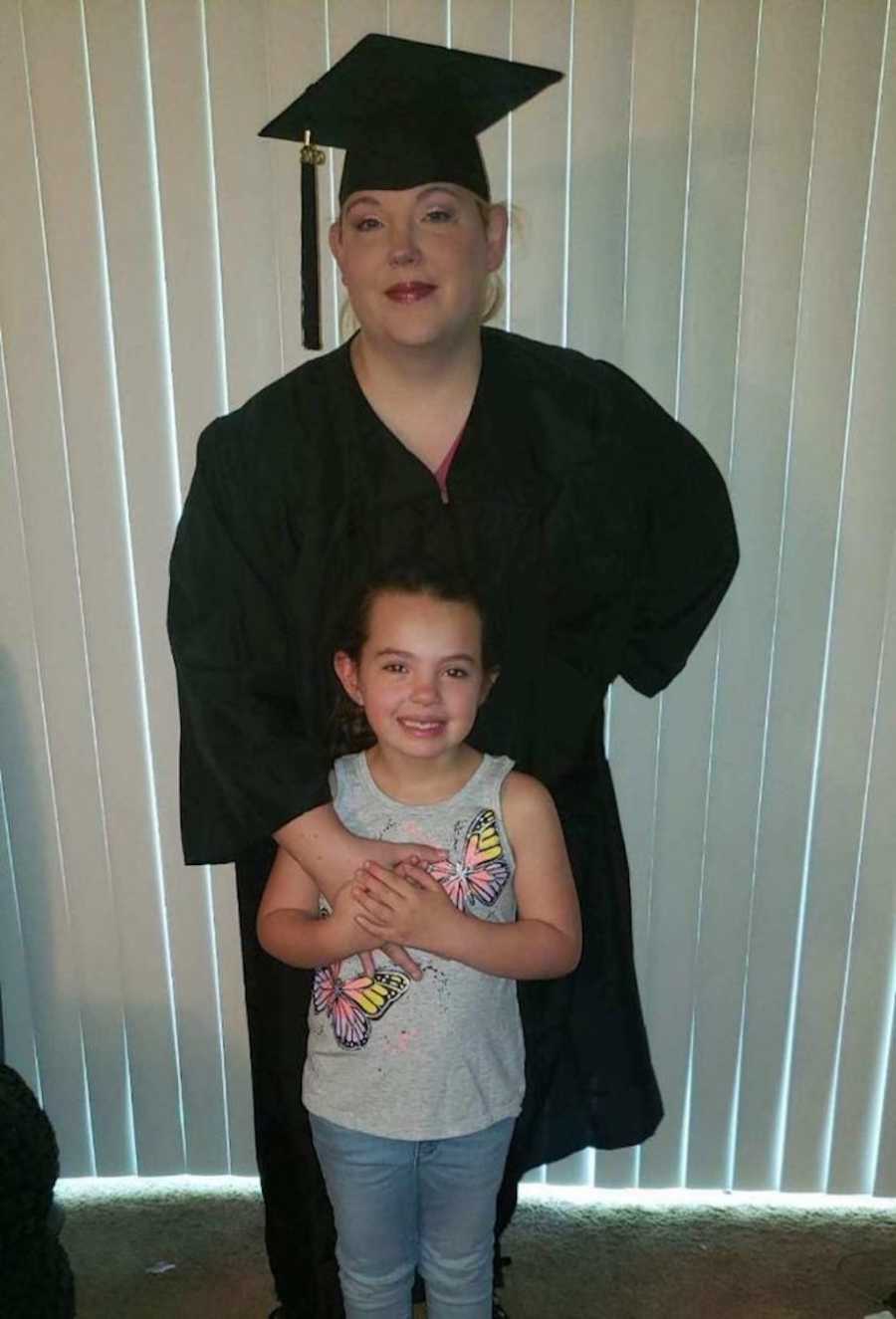
I may have endometriosis, but it does not have me.”
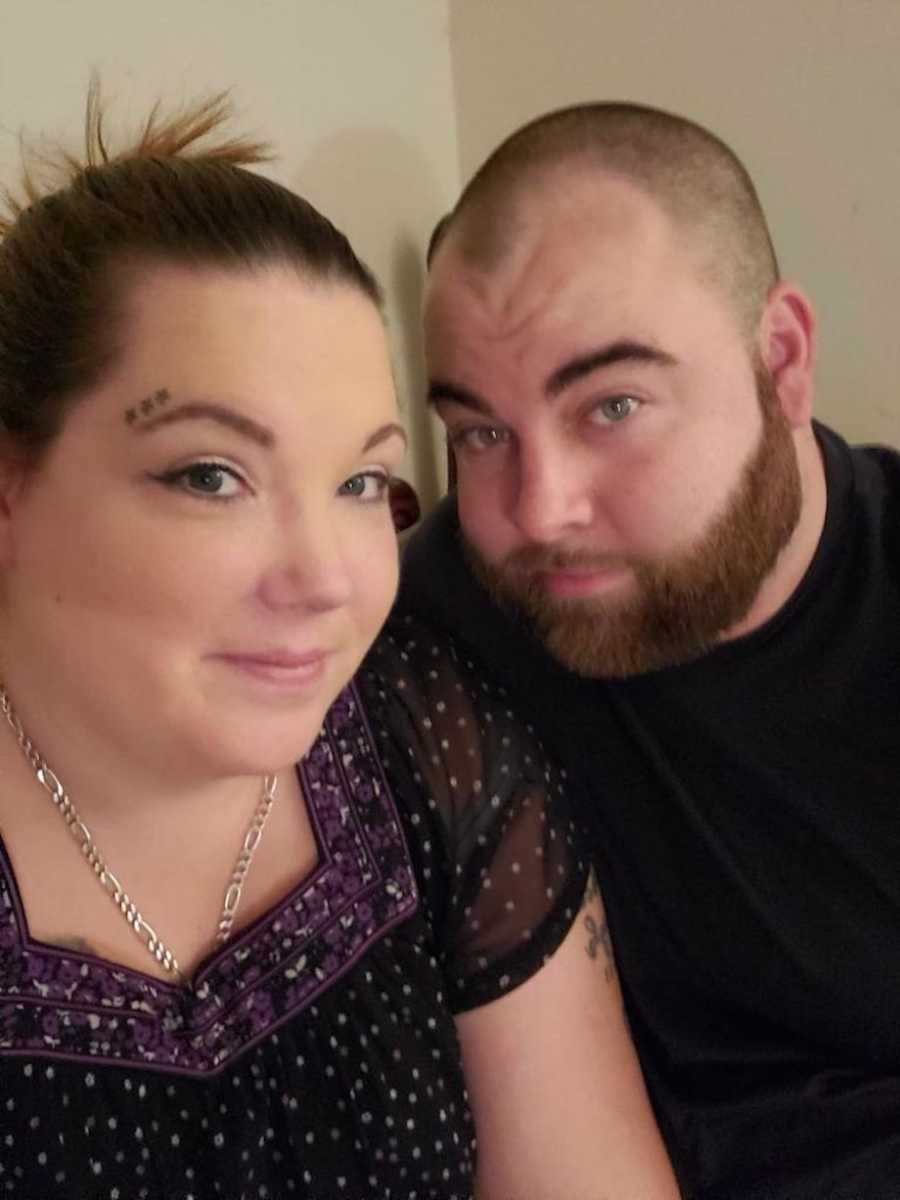
This story was submitted to Love What Matters by Holly McLaughlin-Mowery. Do you have a similar experience? We’d like to hear your important journey. Submit your own story here. Be sure to subscribe to our free email newsletter for our best stories, and YouTube for our best videos.
Read more powerful stories like this:
Do you know someone who could benefit from reading this? SHARE this story on Facebook with family and friends.

